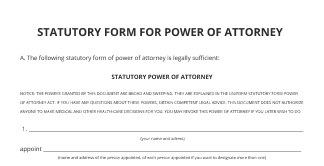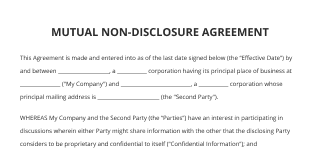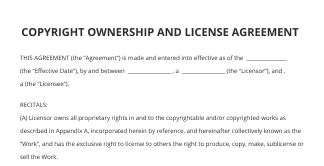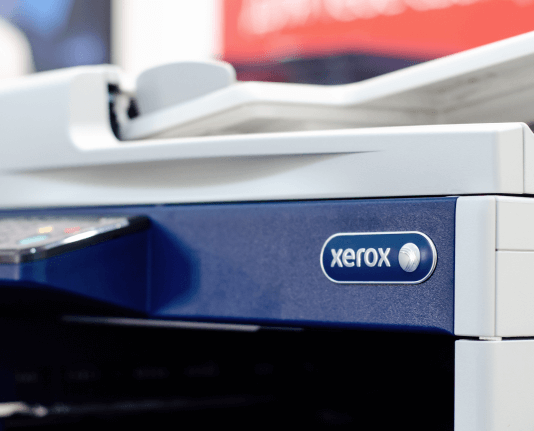Crea Una Plantilla De Factura Para Apple Pages Sin Complicaciones Para TI
Impulsa tu negocio con la solución de firma electrónica de airSlate SignNow
Agrega tu firma legalmente vinculante
Integra mediante API
Envía documentos condicionales
Comparte documentos mediante un enlace de invitación
Ahorra tiempo con plantillas reutilizables
Mejora la colaboración en equipo
Vea las firmas electrónicas de airSlate SignNow en acción
Soluciones de airSlate SignNow para una mayor eficiencia
Las reseñas de nuestros usuarios hablan por sí mismas






Por qué elegir airSlate SignNow
-
Prueba gratuita de 7 días. Elige el plan que necesitas y pruébalo sin riesgos.
-
Precios honestos para planes completos. airSlate SignNow ofrece planes de suscripción sin cargos adicionales ni tarifas ocultas al renovar.
-
Seguridad de nivel empresarial. airSlate SignNow te ayuda a cumplir con los estándares de seguridad globales.

Creando una plantilla de factura para Apple Pages para TI
En el panorama digital acelerado de hoy, tener un sistema de facturación eficiente es crucial para los profesionales de TI. Una plantilla de factura para Apple Pages para TI puede agilizar tu proceso de facturación, facilitando el seguimiento de pagos y manteniendo la profesionalidad. Esta guía te guiará en el uso de airSlate SignNow para mejorar tus capacidades de facturación.
Usando airSlate SignNow con la plantilla de factura para Apple Pages para TI
- Abre tu navegador y visita el sitio web de airSlate SignNow.
- Crea una cuenta de prueba gratuita o inicia sesión en tu cuenta existente.
- Selecciona el documento que deseas firmar o enviar para firmas.
- Si anticipas necesitar este documento nuevamente, conviértelo en una plantilla reutilizable.
- Accede a tu documento para hacer las ediciones necesarias, como agregar campos rellenables o información específica.
- Agrega tu firma e inserta campos de firma para otros que necesiten firmar.
- Haz clic en 'Continuar' para configurar y enviar la solicitud de firma electrónica.
airSlate SignNow está diseñado para potenciar a las empresas proporcionando una solución fácil de usar y rentable para transacciones electrónicas. Sus funciones enriquecidas ofrecen un alto retorno de inversión, asegurando que aproveches al máximo tu presupuesto.
Con precios sencillos y sin costos ocultos, airSlate SignNow es perfecto para pequeñas y medianas empresas que buscan escalar. No te pierdas el soporte excepcional 24/7 incluido en todos los planes de pago. ¡Comienza a aprovechar el poder de airSlate SignNow hoy mismo!
Cómo funciona
Funciones de airSlate SignNow que los usuarios adoran
¡Obtenga firmas legalmente vinculantes ahora!
Preguntas frecuentes pages invoice template
-
¿Qué es una plantilla de factura para Apple Pages para TI?
Una plantilla de factura para Apple Pages para TI es un documento pre-diseñado creado específicamente para profesionales de TI para facturar fácilmente a sus clientes. Ayuda a agilizar el proceso de facturación, asegurando que se incluyan todos los detalles necesarios junto con un diseño profesional, facilitando su personalización para cada proyecto. -
¿Cómo puedo crear una plantilla de factura para Apple Pages para TI?
Puedes crear una plantilla de factura para Apple Pages para TI comenzando con un diseño básico de factura en Apple Pages y personalizándola para adaptarla a las necesidades de tu negocio. Incluye campos para servicios prestados, precios, información del cliente y términos de pago para que sea completa y profesional. -
¿Existen costos asociados con el uso de una plantilla de factura para Apple Pages para TI?
Usar una plantilla de factura para Apple Pages para TI suele ser gratuito si creas tu propia plantilla. Sin embargo, algunos proveedores externos pueden cobrar por plantillas diseñadas profesionalmente. Considera tus requisitos y si una opción gratuita satisface tus necesidades. -
¿Qué características debo buscar en una plantilla de factura para Apple Pages para TI?
Al elegir una plantilla de factura para Apple Pages para TI, busca campos personalizables, un diseño limpio y compatibilidad con Apple Pages. Además, características como facturación detallada, cálculo de impuestos y términos de pago pueden mejorar mucho la utilidad de la plantilla. -
¿Puedo integrar airSlate SignNow con mi plantilla de factura para Apple Pages para TI?
Sí, puedes integrar sin problemas airSlate SignNow con tu plantilla de factura para Apple Pages para TI. Esto te permite enviar fácilmente facturas para firma electrónica, asegurando aprobaciones rápidas y seguras por parte del cliente, optimizando tu proceso de facturación. -
¿Cuáles son los beneficios de usar una plantilla de factura para Apple Pages para TI?
Usar una plantilla de factura para Apple Pages para TI ayuda a ahorrar tiempo y esfuerzo mientras presenta una imagen profesional a los clientes. Asegura la coherencia en tu facturación y reduce errores, permitiéndote enfocarte más en tus servicios de TI y menos en tareas administrativas. -
¿Es fácil actualizar una plantilla de factura para Apple Pages para TI?
¡Por supuesto! Actualizar una plantilla de factura para Apple Pages para TI es simple y fácil de usar. Puedes hacer enmiendas rápidamente en Apple Pages, asegurando que tu plantilla siga siendo relevante para las necesidades cambiantes de tu negocio sin esfuerzo de signNow. -
¿Dónde puedo encontrar ejemplos de plantillas de factura para Apple Pages para TI?
Puedes encontrar ejemplos de plantillas de factura para Apple Pages para TI en varias bibliotecas de plantillas en línea, sitios web de suministros de oficina o a través de la galería de plantillas de Pages de Apple. Muchos creadores también ofrecen plantillas descargables que se pueden personalizar para adaptarse a tus servicios.
Lo que dicen los usuarios activos — pages invoice template
Búsquedas relacionadas con pages invoice template
Apple pages invoice template for IT
Hi, this is Gary with MacMost.com. Let me show you how to create an invoicing system using Numbers. So I sometimes get questions from people using Numbers and they're trying to create invoices. What they'll do is create an invoice on each sheet. So they create a nice looking invoice and then they'll duplicate it and have different sheets in the same document or even different documents. The problem is you might as well just be using Pages or something to do that as you can't really do much with the data. The correct way to use a spreadsheet is to put records in rows where each row is a record for something like say billable hours. Then if you want to create invoices have a single invoice that pulls data from that. So here's what such an invoice may look like. But I haven't entered any of this data except for this client ID. Watch what happens if I change the client ID. I'm going to change it to client 5. If I do that notice the name of the client changes, these records change, the total changes, and I have an entirely new invoice. The way I've created that is by creating Tables using records as rows. So I actually have two sheets. One is a sheet with clients in it and it's just client ID's and names. The other is a list of records of billable hours. That's the only table that I need to create this invoice. So my first sheet here shows clients. This is a table where I've entered in the data manually. It's the client ID, just a number, and a name. So it's all just entered in. I can add more to the list as I get new clients. Now Consultations is a sheet here that actually has a record on each row. The record is a client number, name, and information about that set of billable hours. Some of these are entered in manually. I enter in the client number, put a date, the number of hours, and the rate. Now the total, as you can guess, is calculated using a formula. So that's just the number of hours times the rate. Simple enough. The name is actually looked up automatically. So it's using the Lookup function and then it will lookup from this number here, the client number that's entered in, and it will go to this table and lookup the ID in this column and grab the name out of that column. That's how that works. So all I need to do is say if I wanted to change this client I go to number 3 and you can see it changes the name automatically. So I can start a new record without having to type the entire client's name. Just their ID. In addition I've got this paid field here. I actually manually entered that in. So somebody pays the invoice that has these hours on it. I will type in the date they paid. Which is a good piece of information to have and it also gives me a record of the fact that they paid this line here. So how does this invoice work? Well, this name here works the same way as the name on the Consultations sheet does. It just looks it up. It looks up the client ID from this number here and grabs the ID from this column and then the name from this column and puts it in the invoice. So that's how that works. This is a lot trickier. So I'm going to start by doing something special in the Consultations table. You may have noticed there's another column in there. I'm going to show you what that is and how it works. This Due Flag, just a name I came up with, has numbers in it, a bunch of zeros, and you can see the zeros are always when something has been paid. Then you can see a couple of numbers here, there's 1 and 2. What these are indicating is that there is an unpaid record here. So this is client 5 and client 5 matches the client ID here. So client 5 and they have a blank space here under paid. So the formula for this is looking at two things. First is the client ID, this number here, equal to this number here. If it is, so far so good. We're doing an and statement so we have two conditions. The other condition is is this cell here blank. If it is that means we have an unpaid line here. What value are we going to put there. If this is true then we're going to put the number 1 there. But not just the number 1. We're also going to count all of the previous cells in this row. Anything that is greater than zero, right here, anything that is greater than zero is going to count as 1 and we're going to add that together. So 1 plus all the previous ones greater than zero. There's none. But this one is 1 plus all the previous ones greater than zero there's one so it's a 2. If I were to go here and change the client ID to client 7 and I go back to Consultations you can see I've got a 1 and then a 2 and then 3 and then a 4. So it's just counting up for each one of the rows that has client 7 and a blank, 7 and a blank, etc. So I've got handy stuff in there. I can hide this column if I want to because I don't really need to actually manually use it. It will all happen automatically. So what's happening with the invoice. It's obviously grabbing the rows where there are numbers there in that special column. So you're not seeing everything here in this table. You can see it starts with column B. I'm going to go ahead and Unhide all columns and you can see what's here. You've got Row A. Row A has 13, 16, 17, and 18 which correspond to the rows that have numbers in it, 13, 16, 17, 18. Okay. How's it doing that? Well, it's using the Match function. It's matching the row number, in this case row 2 minus one so it'll be one. I have to minus one because row 1 is actually the Header here. Then it's looking in this column here, the Due Flag column, and it's also saying, hey if it's an error just use a zero instead because the Match function will return an error if it doesn't find it. I want it to return to zero if it doesn't find it. So basically it's saying the match for 2 minus 1 is 13. 3 minus 1 is 16. 4 minus 1 is 17, and 5 minus 1 is 18. So they correspond to 1, 2, 3, 4 which corresponds to 1, 2, 3, 4. So this entire column here, its only purpose is to get the row numbers for those records where there are unpaid hours. Now each one of these is simply grabbing the index from this column that matches the value in this row. So the date column row 13. Then the date column row 16. It is using if in saying look if it's greater than zero, this number here is greater than zero, then do it. Otherwise put blank in there. Why? Well because this table here is actually much bigger than 4 different records. If I go to Organize and I turn on Filters you can see I've got ten spaces in there. Zeros are saying, hey I don't have anything here. I've got 1, 2, 3, 4 records and then there's no fifth record, no sixth record, no seventh record. So it's saying zero. So then this here has the same formula in it but it's doing a blank because it's a zero other there. All of these are doing a blank. So this one, the hours, is looking for the hours column that matches 13. This one is looking for the rate column that matches 13 and the total column that matches 13. So I get four filled in rows and six blank rows and thanks to the Filter all of the blank rows are gone and missing. I don't want them. Then I'm using a simple sum formula for the hours there. Nothing special about that. A sum formula for the Total. Nothing very special about that. This is just saying take the value from here and also stick it there. So we have in total two places. There's the invoice. The great thing is I can pick another client ID. It will pick up rows 12 and 13 instead of the 13, 15 or whatever those rows were, and give me new blank ones. If I pick a client that has no outstanding hours then I get something that looks like this and I would never, of course, send an invoice. So I can go ahead and use this for any number and it will give me the invoice values. I can get rid of this row here by Hiding it, or the column by hiding it. Right there. So it's nice and neat. Now I can basically add items here. I can add new clients here. Anytime I want to make an invoice all I do is enter a number there. Now I can Print it or save it as a PDF to generate this invoice. Obviously I'm showing something really specific there but hopefully you get the general idea and I'll make this entire Numbers document available for you to download at this post at macmost.com.
Show moreObtén más para pages invoice template
- Hoja de factura en blanco para la Industria de Seguros
- Crear una hoja de factura en blanco para servicios legales
- Hoja de factura en blanco para Ciencias de la Vida
- Hoja de factura en blanco para hipoteca
- Hoja de factura en blanco para ONG
- Crear una hoja de factura en blanco para bienes raíces
- Hoja de factura en blanco para Comercio Minorista
- Crear una hoja de factura en blanco para personal de staffing
Descubre otros pages invoice template
- Aprovecha al máximo nuestras herramientas impulsadas ...
- Aprovecha al máximo nuestras herramientas impulsadas ...
- Aprovecha al máximo nuestras herramientas impulsadas ...
- Aprovecha al máximo nuestras herramientas impulsadas ...
- Aprovecha al máximo nuestras herramientas impulsadas ...
- Aprovecha al máximo nuestras herramientas impulsadas ...
- Aprovecha al máximo nuestras herramientas impulsadas ...
- Aprovecha al máximo nuestras herramientas impulsadas ...
- Aprovecha al máximo nuestras herramientas impulsadas ...
- Aprovecha al máximo nuestras herramientas impulsadas ...
- Aprovecha al máximo nuestras herramientas impulsadas ...
- Aprovecha al máximo nuestras herramientas impulsadas ...
- Aprovecha al máximo nuestras herramientas impulsadas ...
- Aprovecha al máximo nuestras herramientas impulsadas ...
- Aprovecha al máximo nuestras herramientas impulsadas ...
- Aprovecha al máximo nuestras herramientas impulsadas ...
- Aprovecha al máximo nuestras herramientas impulsadas ...
- Aprovecha al máximo nuestras herramientas impulsadas ...
- Aprovecha al máximo nuestras herramientas impulsadas ...
- Aprovecha al máximo nuestras herramientas impulsadas ...






























